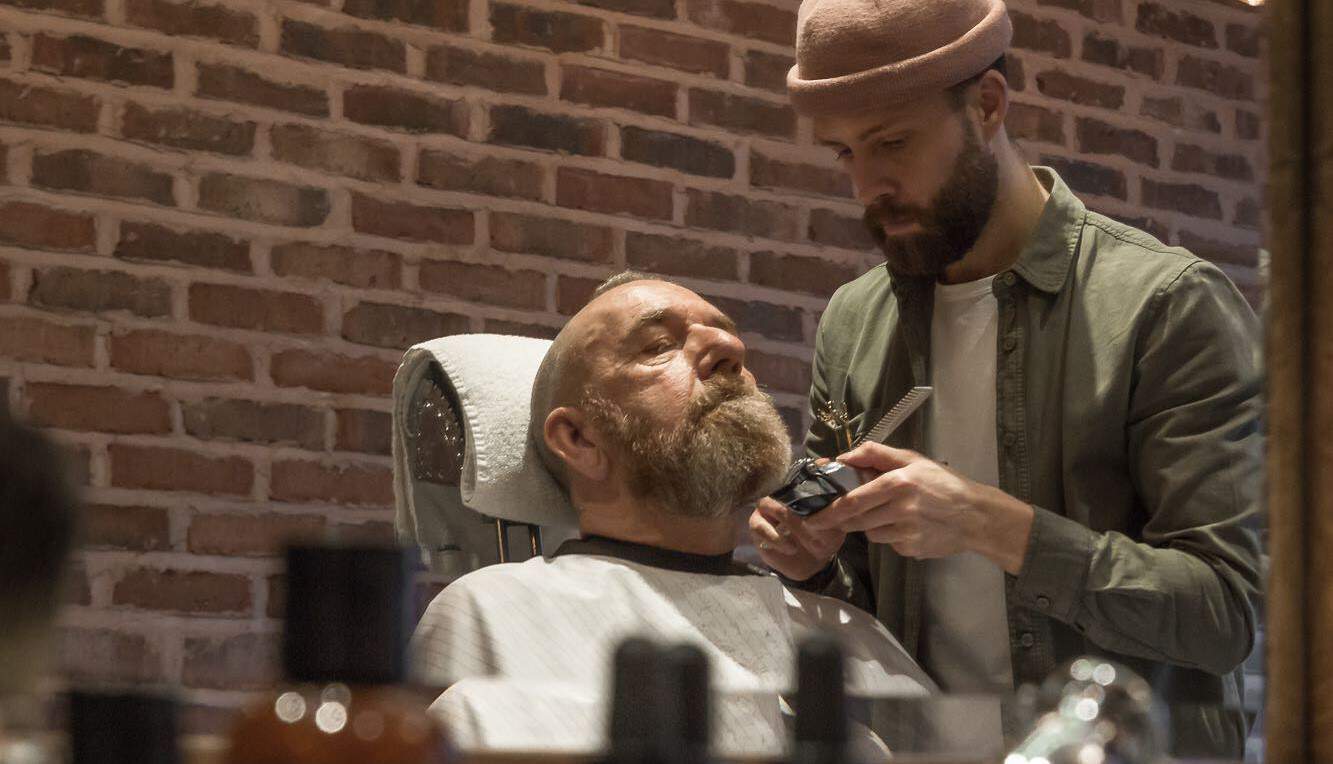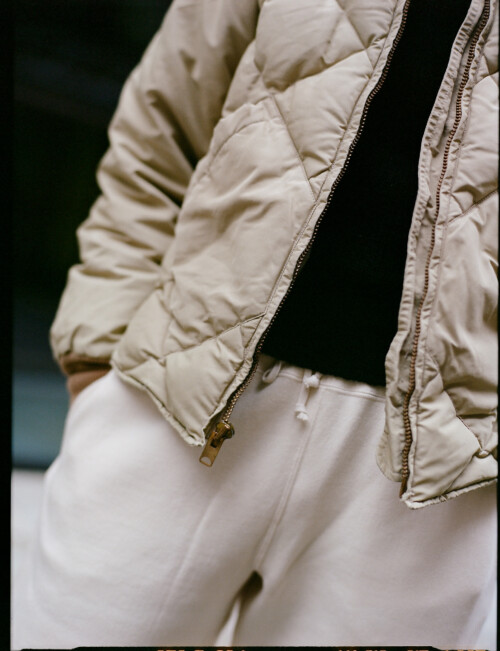
With the growth of interest in outdoor clothing in recent years, there has been a predictable dive into the history of companies that produced it, of which one of the most prominent was Eddie Bauer.
One reason I find this exploration interesting is that a lot of heritage outdoor clothing was more refined than today’s puffas and parkas – even elegant. They tended to be slimmer, they had collars rather than hoods, and they used more natural materials – dense cottons for example, or cotton/nylon mixes.
A few companies have done reproductions in recent years, including Buck Mason with Eddie Bauer itself and Bryceland’s, whose down jacket (being reissued later this year) is a reproduction of my favourite style, the bomber-like Skyliner.
But it’s also possible to pick up vintage Bauer cheaply on eBay (especially in the US), which is what I’ve done recently and the guys at Bryceland’s have done in the past. The only stumbling block is that something like the Skyliner was made for so long that the quality slowly deteriorated over the decades – wool ribbing was replaced with polyester, metal zips by plastic.
So I thought it would be useful to get a guide to buying pieces like this from Ben Chamberlain at Bryceland’s, who knows a lot more about it than I do. Here are my questions and his answers, and pictured is Kenji (right) in a vintage Skyliner, as well as Ben (left).
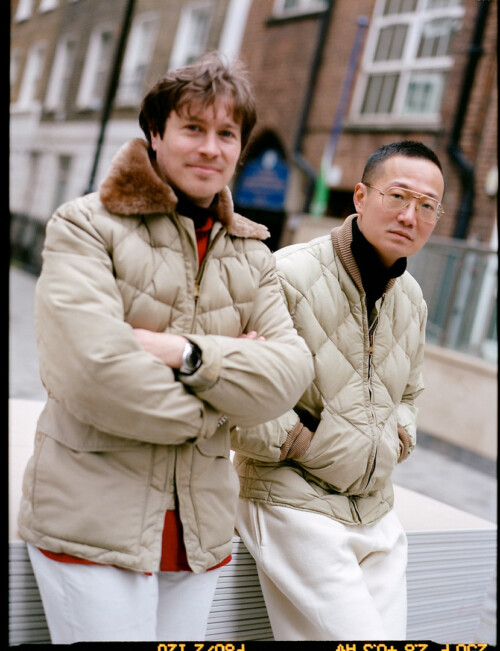
What’s the first thing to be aware of when buying these pieces vintage, Ben?
Most important is understanding what you want: a true ‘archive’ piece, which will come with a high price tag (sometimes staggeringly high) or something which is wearable and affordable, though not as desirable for one reason or another.
How have Eddie Bauer jackets changed over the years?
Since Bauer first started pioneering down jackets in the mid-thirties, they’ve been a constant crossover item from outdoors adventurers to street-style icons. When Bauer first patented his diamond-quilted, down-filled design in 1936 it was revolutionary; the idea was so ahead of its time and so simple that the basic construction has remained pretty much the same ever since – just two layers of fabric quilted and filled with down feathers, for greater warmth retention without the weight.
As not a lot has changed, and Eddie Bauer specifically produced the same designs such as the Skyliner and Yukon for decades, the differences are really in things like the materials and hardware.
![]()
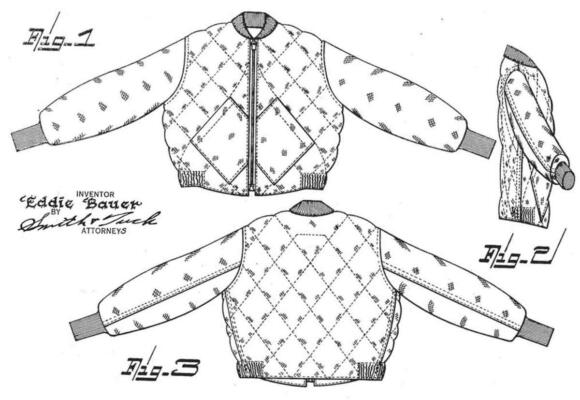
When does the Skyliner date from?
The Skyliner is one of Bauer’s recognisable models, and a precursor to modern bomber jackets. Waist-length with knitted collar and cuffs, it was the earliest commercial model Eddie Bauer brought to the market in 1936. It’s easy to see why the design remained unaltered as well as becoming highly collectible.
Kenji’s example shown here dates from the late 1950s/60s. Compared to the original patent the tightly woven cotton outer has been replaced with a cotton/nylon mix – which was found on most down jackets of the time and is still used today – and the ribbing has changed from 100% worsted wool to wool/nylon. The liner also changed over the years as production and textiles changed and modernised.
Are those the key things to look out for when trying to date one, on eBay for example?
Yes, the first thing is the outer shell. You’re unlikely to find a pure cotton one, but the cotton/nylon mixes are great and very functional. The mix changes from 60/40 to 40/60, but they’re all good.
The pure nylon which started to appear in the 60s onwards is a little different, more of a ‘shell’ jacket, which is a little lighter and in-line with more modern streetwear, but still has its place. In the 80s pure nylon shells started to become the standard across all models; these are still fine and have some lovely colours, but lose a bit of the charm of the earlier versions.
Look for the label too. Anyone that loves labels in general would have come across the iconic Eddie Bauer ‘Sun’ logo. Used from the very first jacket, it is instantly eye-catching: the rich gold of the sun rising above the horizon, the cold blue of the ice flow and red ‘Bauer’ lettering all set on a black background. The perspective of the ‘Bauer Down’ text is set central, like a monolith, or the opening credits of Star Wars – it’s epic.
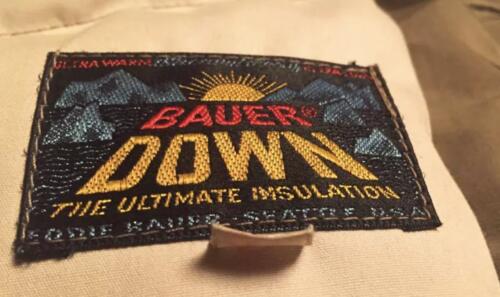
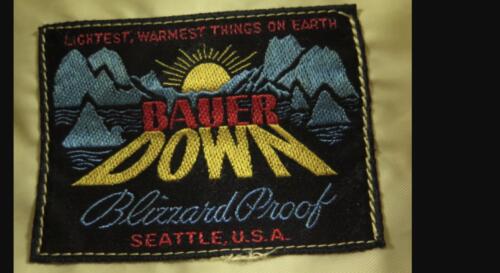
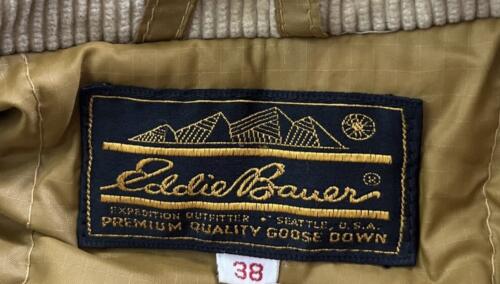
This label was used from the 30s right up until the 1960s, with a few minor changes over that pretty vast time-period: the placement of the ® symbol and the ‘Blizzard Proof’ text date the jacket to the 1960s, while dating before then can trickier.
Jackets with these labels can be pricey, so the best place to start is jackets with the gold script logo – and the fetching, but quite plain ‘cubist’ mountains – that replaced the sundown logo in the late 1960s. Another plus for later jackets is the vastly expanded colour palate, which can be a bit more fun and in-line with modern repro-brands like Rocky Mountain featherbed.
Other changes include the lining, but this was nylon from the early 1950s onwards, and the zips, which were plastic in later years. Metal zips, and specifically Talon zips, are a good indicator of earlier jackets, and specifically those produced earlier that the 1980s.
Did the design of the Skyliner change in any other way?
No, it was noticeably timeless. It’s short in the body but not too much, which proportionally makes it easy to wear and pairs effortlessly with most casual items. The only limitation is that the shape reduces the amount of layering you can do.

How does the performance compare to a modern down jacket?
It depends what you need them for. If it’s just to keep warm, then vintage is still good, tends to be cheaper, and as mentioned has a touch more character. Modern down jackets will have sealed seams and be more water resistant, but down jackets aren’t really designed for rainy weather.
If you wanted to go hiking or climbing, modern would also be a safer bet, although on a trip to Iceland last November I took a vintage 1960s nylon shell Eddie Bauer and it served me very well, great for layering.
Compared to modern repro down jackets, if you can find a vintage one you like then vintage makes more sense monetarily and in terms of sustainability; but there’ll be a certain amount of compromise regarding options and colours.
What other models from Eddie Bauer fit this vintage, streamlined aesthetic?
The best known model apart from the Skyliner is probably the Yukon, which Bauer released in 1946. Closer to an overcoat or parka, it’s smarter and a little more stylised – cut long with a full mouton collar and more tailored fit. The design is a little dated today, but it’s a great piece. The man himself described it as “the aristocrat of all down jackets”.
What other brands from the period are worth watching out for?
Though Eddie Bauer is the best known, there are brands which sometimes get ‘left out in the cold’ when looking at down jackets. Seattle Quilt MFG had been making quilted-down sleeping bags since the 1920s, a good 15 years before Bauer took that idea and put sleeves on it. When they finally saw the potential for their product, they started the Comfy sub-brand in 1936.
The jacket I’m wearing here is one of the earliest Comfy designs – from the late 40s or early 50s – and is similar to the Bauer Yukon. There are some elements of the Comfy that I personally prefer though: the diamond quilting similar to the Skyliner, the scalloped pocket design, the slightly larger collar and the burgundy sateen half-lining.
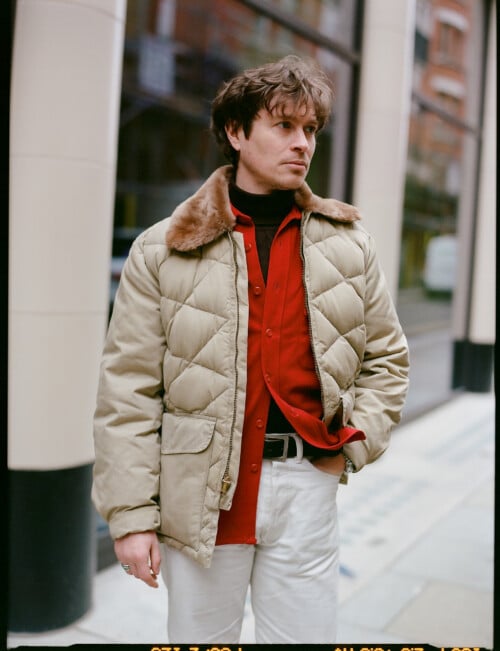
In the late 60s into 70s the Comfy brand had a distinctive style shift, producing slightly more western-inspired jackets. Nylon shells, shoulder yolks, brighter colours; these are a lot of fun, cheap and easy to find. The logos a bit of fun too, very much of the time.
Beyond Eddie Bauer and Comfy, there are other smaller brands from the 50s and 60s: Alaska Sleeping Bag Co, Alaska Feather Down, others that don’t have Alaska in the name. Then in the late 60s into the 70s there was a boom in companies specialising in down-jackets and outdoor attire: Sierra Design, Rocky Mountain Featherbed, Powder Horn, North Face and of course, Patagonia.
Many of these companies’ designs were very similar if not identical, essentially white-labelled. But there are some good examples and nice colourways out there, making them a great way to find an inexpensive and wearable down jacket at a fraction of the cost of a new one.
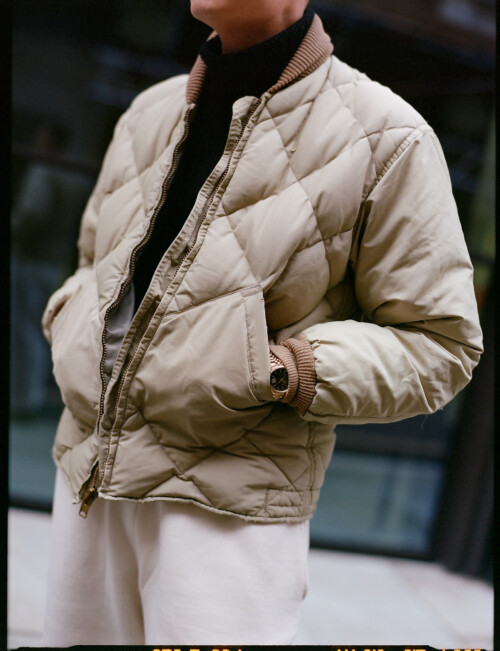
If eBay is the best source for the cheaper end of the market, particularly in the US, one of the best for the very high end is Saunders Militaria. Increasingly many vintage shops stock outerwear along these lines though – some of the best I found were in Korea at places like Omnipeople.


